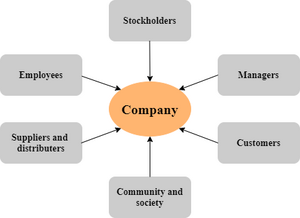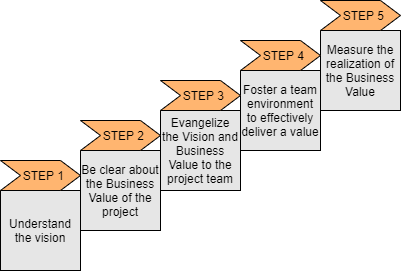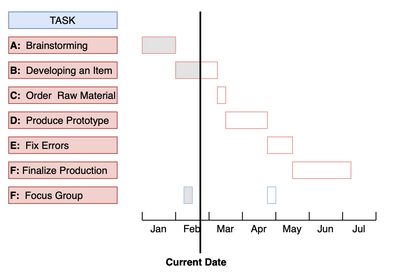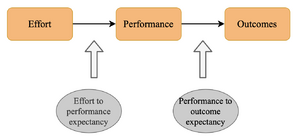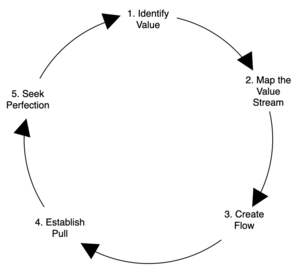BL tools
Introduction to Management Tools
This wiki article, referred to as a "Toolbox", provides several tools that can be utilized when managing programs and projects within organizations. Every organization has its own way of running operations as well as own sets of values, principles and procedures, but the tools provide to some extent a framework that every organization can adopt. These tools can be used as guidance from analyzing the current state of an organization to visioning the desired state. The elements in between those two states can be illustrated and characterized by using the tools and moreover, managers can get an overview of where the main focus should be. Tools and methods belonging to management studies are countless but all of them serve the purpose of guiding managers from the problem towards the solution. Therefore, it is important to have a clear problem statement, a well defined scope of the particular project and conception of expectations before choosing appropriate tools to work with. If preparation and foundation is done thoroughly, working with the tools will be efficient and effective.
BL ehf. is a car dealership that has the largest car workshop located in Iceland. Currently, the workshop is facing the problem of not being able to service the number of customers they want to and are able to service. This problem has been arising over the past years and the rot causes lie in various different reasons, some known and some unknown. When the root of a problem can not be specifically defined, it is for instance important to initiate by considering different stakeholder groups, analyse weaknesses and strengths and approach the problem with Lean methodology.
Collection of tools - "Toolbox"
Stakeholder Analysis
The people and groups that are affected by a company's business decisions are called stakeholders. It is important to identify stakeholders when ensuring project success because stakeholders supply a company with its productive resources and as a result, they have a claim on and a stake in the company.
Stakeholders Analysis is an important tool for stakeholder identification and analysing their needs. The aim is to develop a strategic view of the human institutional landscape and the relationships between different stakeholders. In literature, several descriptions of stakeholder analysis processes can be found but most companies have their own definition of the process. [1]
The typical structure is the following:
1. Identify stakeholders
2. Analyse stakeholders
3. Engage stakeholders [2]
Quality Management Systems
Quality Management System (QMS) is a collection of business processes and functions aimed at continuous improvement of quality to ensure customer expectations and requirements are met or exceeded. Quality management systems enable the organizations to identify, measure, control and improve their core business processes that will ultimately lead to improved business performance. [3]
Different methods to manage quality
Every business has its own unique set of products, goals and values. Quality management systems should be implemented with the aim of embracing those differences. To do so, there are several types of quality management systems that can be used, each with their own set of advantages and disadvantages. The following, along with a broad description, are the most commonly used:
- Standardized Systems: Any quality management systems that follow a set of federal codes and regulations (for example ISO 9000/9001).
- Total Quality Management (TQM): A management approach in which quality is emphasized throughout every aspect of a business.
- Continuous Quality Improvement (CQI): A quality system that is never satisfied
- Six Sigma: Data-driven approach that aims for perfection in quality (define, measure, analyze, improve and control). [4]
Benefits of quality management systems
Implementing a QMS affects every aspect of an organization’s performance. Examples of benefits are as follows:
- Meeting the customer’s requirements which can lead to increased number of customers and more sales.
- Meeting the organization’s requirements which can create room for expansion, growth and profit.
- Defining, improving and controlling processes
- Reducing waste
- Preventing mistakes [5]
SWOT Analysis
SWOT analysis for project management is an effective process where it allows the project manager to identify areas that need improvement and get a quick overview of what obstacles needs to overcome. It provides valuable knowledge about both customer preferences and competitors intents, and also where are the possible opportunities to grow.
SWOT analysis is an important part of the project planning process and can provide a backbone to the project plan if it is conducted early on in the planning because it considers both the internal and external factors that can impact the project. The sooner the factors are identified, the sooner it is possible to use them for advantage.
- Strengths: attributes of the organisation that help achieve the project objective.
- Weaknesses: attributes of the organisation that stop achievement of the project objective.
- Opportunities: external conditions that help achieve the project objective.
- Threats: external conditions that could damage the project. [6]
The SWOT analysis is usually presented in a 2X2 matrix which generates four boxes where one is for strengths, one is for weaknesses, one for opportunities and one for threats.
Steps to delivering business value
Business value is used to help see the additional ways to improve the performance of an organization. Efficient portfolio, project and program management can help to realize the predetermined goals and values of the business. Project Management is used in organization to help applying tools and techniques that increase the possibility of success of projects.
There are steps that a project manager should consider to ensure that the project is capable of delivering business value.
1. Understand the vision
The vision should include a high-level view of the scope of the project and the reason the project was created. The vision is then internalized and it is vital that the project manager believes in the purpose of the project and feels that it is worthy of the effort that will be extended.
2. Be clear about the business value of the project
The organization needs to identify the value the project will deliver and how it will be measured during the project. The business value should be stated in monetary terms whenever possible.
3. Evangelize the vision and business value to the project team
A key function of a project manager is to motivate the project team. If the project team can understand the vision and business value of the project, they will become much more engaged in their work and even enthusiastic about delivering value to the customer.
4. Foster a team environment to effectively deliver value
It is the responsibility of the project manager to foster an environment and remove any roadblocks in their way and this will allow the team to deliver efficiently.
5. Measure the realization of the business value
The project manager is responsible for reporting on the progress of a project. This step occurs throughout the project and often requires continued measurement after the project is complete. [7]
Organizational project management maturity model (OPM3)
Strategy sets out the direction of a company, what goals and objectives they wanna achieve and what values and missions they want to pursue. Organizational Project Management (OPM) is a systematic framework that utilizes project, program and portfolio management to maximize its delivery of strategy and achieve better performance, better results, and sustainable competitive advantage. The aim is to ensure that organizations take the right projects and allocate critical resources appropriately. [8]
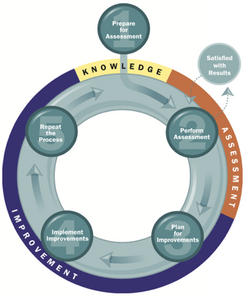
Organizational Project Management Maturity Model (OPM3) is a framework that defines maturity in organizational project management. First, the model is divided into three sections: knowledge, assessment and improvement. Then there are five steps that relate to these sections in the following way:
Knowledge
1. Prepare for Assessment
Assessment
2. Perform Assessment
Improvement
3. Plan for Improvements
4. Implement Improvements
5. Repeat the process
The maturity is defined in step 2 but there are stages of every project, portfolio and program considered. The stages are four: standardize, measure, control, and improvement. Once this has been established, it is clear where the maturity of the organizational project management stands and if it has to be improved. [10]
Risk Management
Risk Management is a structured process that helps managers to react to uncertain events or situations (positive or negative) that might come up. It is usually implemented at the earliest stage of a project and is a key part of good management. The aim is to ensure the best value in terms of cost, quality and time.
The process of risk management consists of five steps:
1. Identify the risk
2. Evaluate the likelihood of an risk occurring
3. Plan how to react if risk occurs
4. Implement the control actions as planned
5. Monitor and review the risk [11]
There are 12 principles of risk management, published by The International Organization for Standardization (ISO).
Risk management should:
- create value
- be an integral part of organizational processes
- be part of decision making
- explicitly address uncertainty
- be systematic and structured
- be based on the best available information
- be tailored
- take into account human factors
- be transparent and inclusive
- be dynamic, iterative and responsive to change
- be capable of continual improvement and enhancement [12]
Gantt Chart and Scheduling
Gantt chart is one of the oldest scheduling methods. It is a visual chart where tasks of a project are scheduled and can be tracked in a relatively simple way. On the horizontal, beginning and the end of each task is represented with bars. The constraints of setting up the task bars are that tasks can be dependent on another task, making them critical to be executed before starting to perform the next task. Some tasks are not dependent on any other task, and may be performed parallelly to another task. Other tasks might be repeated with certain tasks. The bars created for each task are filled out, representing how much of the task is completed. A vertical line also shows the current date, being able to observe if tasks are being executed according to what was scheduled. [13]
Expectancy theory
A project manager has to know how to lead people when there are changes made in the program, with a new project. Expectancy theory is a change management tool that can be applied for projects, to consider how the expectations of a project will influence motivation and wheather a stakeholder is likely to support or resist the possible change or project. Employees might be motivated to support a change, or a new program, when they can anticipate that it will provide them with some benefit. Whether this will be turned into positive action of the employees, depends on their expectation that the change, or the project, will deliver the promised benefit.
Expectancy theory focuses on two expectancies about the future:
- Effort to performance expectancy: A person's individual expectations that they can perform at a successfully
- Performance to outcome expectancy: A person’s individual expectation that their performance will lead to desired outcome or avoidance of negative outcomes
Expectancy theory can make sure that the desired efforts, performance and outcomes for each stakeholder will be well defined for them to be motivated to support a change or a project. [14]
Lean Project Management
To make an organization more adaptable to change and more flexible Lean can be used. Lean is a tool to give an organization the opportunity to serve customers better over time. How can Lean be used to improve project management? Lean gives a clear image of the current situation and where improvements can be made, and provides tools to improve what can be improved. A Lean project management tool is the five principles of Lean project management. [15]
They are the following:
1. Specify the value of the projects with the eyes of the customer
2. Identify the value stream for each project
3. By eliminating waste, create value flow
4. Let the customer pull the flow
5. Continuously pursue perfection [16]
By following these steps an organization is able to reduce waste activities and focus on activities that bring value as well as improving productivity and efficiency. It also creates a better use of resources. When pull production is implemented in an organization the production is based on actual demand and work is only done if there is an actual demand. [17]
Agile Project Management
Agile is a project management methodology that focuses on continuous improvement in the development of product or service. In agile management there are used short cycles called sprints and daily meetings called scrums. Sprints are the set amount of time that the team has to complete the task at hand. Sprints are generally from one week to four weeks. Scrum is an agile methodology that is designed to guide teams in the delivery of product or service. Scrum fixes time and cost to control the requirements in a project. That is done by using time boxes, ceremonies, a prioritized product backlog and recurrent feedback cycles. [18]
There are 12 key principles that guide agile project management today:
1. Satisfy the customer
2. Welcome change
3. Deliver frequently
4. Work together - stakeholders and developers collaborate closely
5. Build projects - the team behind the project
6. Face to face time and conversation
7. Measure of projects
8. Sustainable development
9. Continuous attention - update and maintenance cycles
10. Simplicity - keep it simple
11. Organized teams
12. Effectiveness
Within agile there are some frequently used methods with scrum, kanban and lean being the most popular. [19]
Key Performance Indicators
Performance measurement is an extremely important part of management. Measuring performance is important because it helps the company shed a light on what is needed in order to get the company from a current state to a desired performance. Key performance indicators have to be carefully selected and relevant for the company in order for them to help identify exactly where to take action to improve performance.
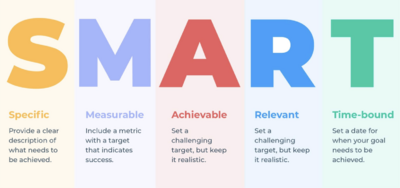
When selecting KPIs a simple method can be used called the SMART technique. This technique can be very useful when setting goals.
S.M.A.R.T. stands for:
Specific: Is your KPI specific?
Measurable: Can you easily measure the progress?
Attainable: Is the goal realistic for you to obtain this measure?
Realistic: Is the goal relevant to organization?
Timely: What is the time frame for achieving the goal [21]
References
- ↑ Project-Management. (October, 2018). What is Stakeholder Analysis?. Retrieved from https://project-management.com/what-is-stakeholder-analysis/
- ↑ Jones, Gareth R. & George, Jennifer M. (2015). [Online] Essentials of Contemporary Management [Book] (7th edition). McGraw-Hill Education.
- ↑ What Is a QMS?. (n.d). The 9000 Store. Retrieved from https://the9000store.com/iso-9001-2015-requirements/what-is-iso-9001-quality-management-system/
- ↑ The Beginner’s Guide to Quality Management Systems. (n.d.). CEBOS. Retrieved from https://www.cebos.com/blog/the-beginners-guide-to-quality-management-systems/#Chapter1
- ↑ What is a quality management system (QMS)?. (n.d.). ASQ. Retrieved from https://asq.org/quality-resources/quality-management-system
- ↑ Jones, Gareth R. & George, Jennifer M. (2015). [Online] Essentials of Contemporary Management [Book] (7th edition). McGraw-Hill Education
- ↑ Delivering business value: The most important aspect of project management. (n.d.). Project Management Institute. [Online]. Retrieved from https://www.pmi.org/learning/library/delivering-business-value-9378
- ↑ Bull, L., Shaw, K., & Baca, C. (2012). Delivering strategy: organizational project management and the strategic PMO. Paper presented at PMI® Global Congress 2012—North America, Vancouver, British Columbia, Canada. Newtown Square, PA: Project Management Institute.
- ↑ Project Management Institute. (2013). [Online] Organizational Project Management Maturity Model (OPM3®) Knowledge Foundation [Book].
- ↑ Project Management Institute. (2013). [Online] Organizational Project Management Maturity Model (OPM3®) Knowledge Foundation [Book].
- ↑ K. Srinivas. (2019, March). Process of Risk Management. Retrieved from https://www.researchgate.net/publication/331783796_Process_of_Risk_Management
- ↑ Committee Draft of ISO 31000 Risk management. (2007, Juny). International Organization for Standardization. Retrieved from https://web.archive.org/web/20090325160441/http://www.nsai.ie/uploads/file/N047_Committee_Draft_of_ISO_31000.pdf
- ↑ Ulrich, Karl T., and Steven D. Eppinger. (2012). Product Design and Development. 5th ed., McGraw Hill.
- ↑ Melanie E. Kreye. (2020). Reading Material, 42543 - Management of Change
- ↑ Bob Emiliani. (2013, December). Why is Lean important?. Retrieved from https://bobemiliani.com/why-is-lean-important/
- ↑ Moujib, A. (2007). Lean project management. Paper presented at PMI® Global Congress 2007—EMEA, Budapest, Hungary. Newtown Square, PA: Project Management Institute.
- ↑ What is Lean Management? Definition & Benefits. (n.d). Kanbanize. Retrieved from https://kanbanize.com/lean-management/what-is-lean-management/
- ↑ Sliger, M. (2011). Agile project management with Scrum. Paper presented at PMI® Global Congress 2011—North America, Dallas, TX. Newtown Square, PA: Project Management Institute.
- ↑ Moira Alexander. (2018, Juny). Agile project management: 12 key principles, 4 big hurdles. Retrieved from https://www.cio.com/article/3156998/agile-project-management-a-beginners-guide.html
- ↑ Thomas Haynes. (January, 2020). Choosing effective digital marketing KPIs. Retrieved from https://www.smartinsights.com/goal-setting-evaluation/goals-kpis/choosing-effective-digital-marketing-kpis/
- ↑ What is KPI?. (n.d.). Paldesk. Retrieved from https://www.paldesk.com/what-is-kpi/
